Sumatran Coffee | Sumatra Coffee producing area in Indonesia _ Lindong Coffee producing area and Aceh producing area
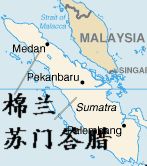
The famous coffee producing areas in Sumatra are GAYO Mountain area (that is, Aceh producing area), Lintong (Lindong producing area) and Sidikalang (Western Garang).
The beans in the GAYO Mountains are now the best in Sumatra, mostly grown in old trees, at high elevations, between 1500 and 2500. This producing area is located in ACEH, the place where the great tsunami occurred. I hope the export of coffee can help the people there after the tsunami. For coffee in GAYO producing areas, the Indonesian and international standard titles are Gayo Arabica,Gayo Mandheling,Lake Tawar and Takengon Mandheling. If you go to the local growers and ask for Mantenin, they don't understand, they have to talk about Arabica. In fact, Mantenin is just a general name in the world. Everyone should know about the misunderstanding about Mantenin. Because the old tree species have been planted here, so the quality has maintained a very high quality, PWN now only collects products here. However, I would like to remind everyone not to go to Aceh alone. There was independence here a few years ago. Although it is now calm and law and order is better than before, it still needs to be led by local people. Foreign tourists are often kidnapped there, and many Indonesian locals dare not go there alone.

The Lindong producing area is located next to the famous tourist area LAKE TOBA (Lake dopa) in Sumatra, where the elevations are 1400-1800, and the tree species are Jember, Garundang Typica and Ateng. Once upon a time, Lin Dong's coffee was famous, but now coffee farmers there have added new tree species to promote the harvest time and yield of coffee, resulting in a decline in coffee quality, so now some well-known Indonesian coffee exporters Have transferred to the GAYO district of Aceh to buy goods. Since some years ago, GAYO coffee was not allowed to be exported, now the government has lifted the ban, so we can taste coffee of first-class quality and taste. Oh, this can also be regarded as a little help from the Indonesian government to the coffee industry. Everyone in the Lindong producing area can rest assured to go there, and by the way, they can also visit the beauty of Lake dopa.

As for Sidikalang coffee, it is also famous locally, but it is mostly supplied to the domestic market and is not exported much. I won't repeat it here.
This coffee trip visited several famous coffee exporters in MEDAN, the capital of Sumatra. The first is, of course, my supplier PAWANI. I am now their first authorized distributor in China. Hehe, it has been 56 years since the establishment of PAWANI. The founder, Mr. Dudebar, and two companions founded PAWANI, which means a long time. PAWANI is the first Indonesian company to sell Indonesian Arabica coffee overseas, which can be regarded as a contribution of Chinese to the coffee industry. PAWANI's main customers are from the United States, Japan and Taiwan. I hope my efforts can also make more domestic Manning enthusiasts taste the products of this famous coffee company.
The current head of PWN-Mr. du Weizhi (son of the founder) and two other veteran bosses Chen, Boss du continues to carry forward Mr. du's founding purpose, quality first, so he has not expanded the size of the company for a long time. All products from origin to packaging are strictly checked layer by layer, so that consumers get the best products. All the products of PWN now come from the GAYO Mountains, which used to be from Lindong District, but Boss Chen said that the quality of Lindong has declined and is not as good as it used to be, so they have changed their production areas. As domestic friends prefer small packaging, I also specifically asked PWN to make all my beans into 30kg packages, and now they are all packed in gunny bags, and the previous straw mat packaging is no longer used.
On the question of Golden Golden Mandheling, there are some non-standard statements on the Internet. I got from the PWN textual research: the name of Golden Manning is not registered in China and Taiwan, so anyone can call it, so everyone has to identify it themselves, but in Indonesia only PWN registered the name of Golden Mandheling, and this time I visited several famous coffee exporters confirmed that they did not produce Huangman, because the handling of Huangman is very different from the general Manning treatment. GAYO's Manning uses half-sun, while Lin Dong's is half-washed. Although Huang Man's treatment is also semi-washed, it is still different from Lin Dong's general treatment. Huang Man's way of handling is very complicated and tedious. The first step is to pick the best cherries of the season in the coffee garden by manpower. Second, by the special master for washing treatment, there is a special way of treatment. Then immediately sent to the factory for screening, manual screening to go through five times, and finally packaged and exported. All programs rely on pure labor, coupled with a special way of handling, to create a precious Huangman, no wonder the price is not cheap. The difference between Huang Man and general Manning is that Huang Man will show golden yellow after a period of time, but Puman will not. Unbelieving friends put G1 on for 5 years to see if there is such a change. Hehe! Needless to say in terms of taste, everyone knows it.
The three seniors of PAWANI are very nice, modest, answer every question, and are very enthusiastic to people, which is one of the reasons why their business has been booming.
Medan urban area
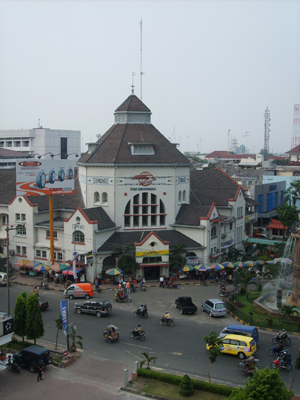
PWN warehouse (this year's output is small, all exported beans have been emptied, and the rest is GRADE 5 for the domestic market)
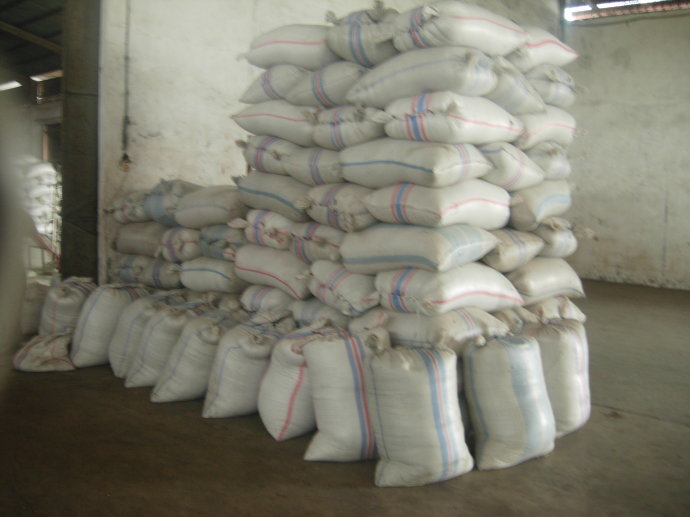
PWN makes the template of the product name.
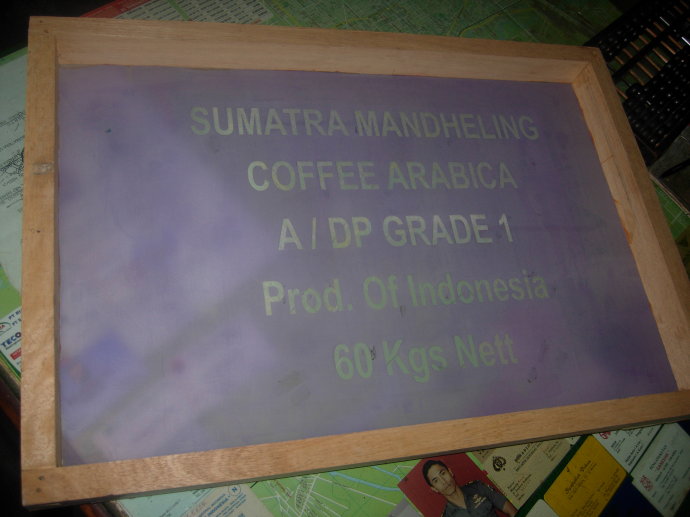
A worker sifting through beans
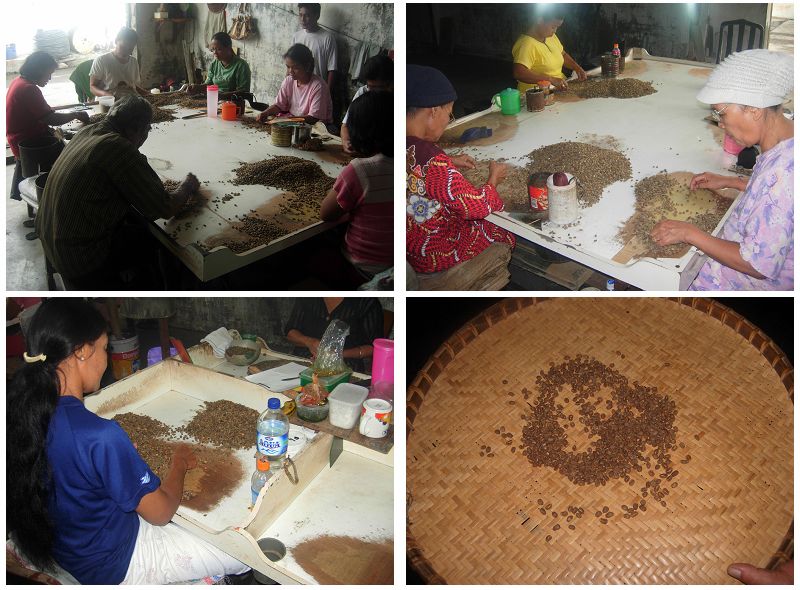
Manning coffee in the minds of most of us, manning coffee is almost the same as Sumatran coffee or even Indonesian coffee. Moreover, our general impression of it is: high mellow, low acidity, and with some herbal and earthy smell. As for the latter, I will focus on the diaries and events held in Sumatra. I just want to talk about the division of producing areas here.

(this picture is from the Internet.) the Mantenin producing area is in the south of Sumatra. But in the early days, they would transfer the harvested raw coffee beans to Medan and then export them. So, like mocha, Sumatran coffee has been synonymous with manning coffee for quite a long time. However, with the gradual popularity of the third wave of boutique coffee, gayo in northern Sumatra, that is, Aceh province, central toba, and SP bolon producing areas have their own characteristics, so officials now refer to Mantenin in southern Sumatra. Of course, as has been said in the past, Manning, representing Sumatra, is not completely wrong. But it would be a common sense mistake to include Java, the Indonesian island of Sulawesi. Gold Manning, many of our friends are very familiar with it. But the naming of Golden Manning may not be what many friends think. First of all, golden manning does not refer to the color of golden yellow, but to large-size coffee beans, that is, coffee beans with more than 19 mesh, which is called golden manning. But as many suppliers find that there is no direct relationship between large size and taste, fewer and fewer people order gold manning. As for why Manning's old beans are golden, it is because Medan, the coffee transfer station, is very wet (more than 80% of the tide). If you have stored coffee for more than 6 months, the reason why the coffee will return to moisture. We often hear 'Super Manning' in the grading of Sumatran coffee beans, while Manning's raw coffee beans are of poor quality. In fact, coffee in Sumatra is graded more systematically.
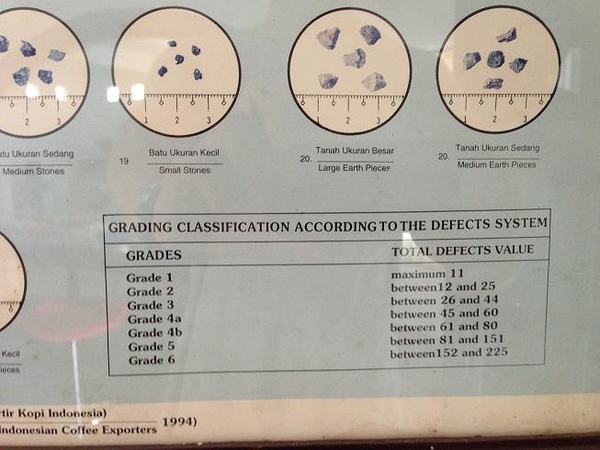
As shown in the figure, for every 300g, no more than 11g with physical defects is called GR1. According to the traditional selection of raw beans in Indonesia, this has to be screened at least twice.

If there is a 12-25g defect, it is GR2. Below is GR2 in the sack.

If we see the coffee beans in the picture below, it's under GR4. Therefore, if we receive such raw beans and claim to be first-class, it is obvious that the raw bean merchants are not responsible.
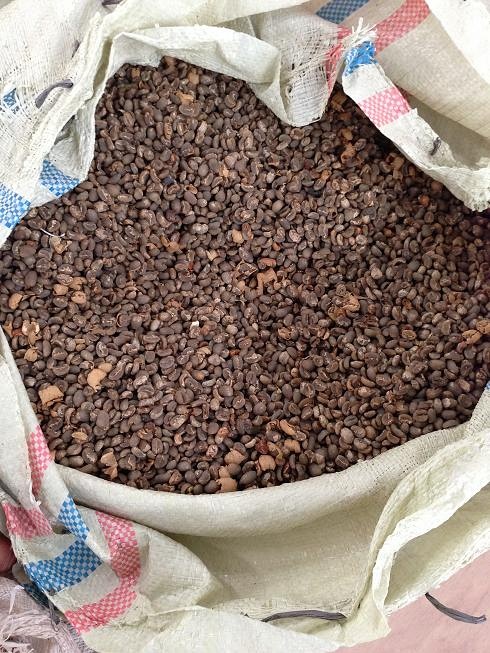

Raw bean screening workshop, of course, people will ask, if you only pick raw beans, what are the chemical defects. This is a big topic, but I have to say that there is still coffee soft power in Indonesia. Professional cup surveyors and even Q grader are very strict with the quality control system. I will elaborate on this later.

Cup test, different producing areas, different sacks, different months of harvest, different treatments. Basically this is the norm, thus tracking the quality of each production area and time.
Important Notice :
前街咖啡 FrontStreet Coffee has moved to new addredd:
FrontStreet Coffee Address: 315,Donghua East Road,GuangZhou
Tel:020 38364473
- Prev

Lock in the aroma of fresh coffee beans how to preserve coffee beans?
The preservation of coffee beans is very important for the quality of coffee, but it is not difficult to do, as long as we pay a little attention, we can better preserve coffee beans. Containers that keep coffee out of the light should be opaque or semi-transparent like red wine bottles. Sealing is very important for the preservation of coffee. Only under sealed conditions can coffee be slowed down.
- Next

Yega Xuefei G1 | Flavor of Ethiopian Sidamo region _ Yega Coffee Bean Classification
Although the Ethiopian Yirgacheffe coffee is petite, it is gentle and delicate and sweet. As the hometown of coffee, thousands of years of planting history and processing tradition in Ethiopia have created high-quality washed Arabica beans. Light baking has unique lemon, floral and honey flavors.
Related
- Guji coffee producing area of Guji, Ethiopia: Humbela, Shakiso, Wulaga
- What is the most expensive variety of Qiloso in BOP multi-variety group?
- How to store the coffee beans bought home?
- Why are Yemeni coffee beans so rare now?
- Ethiopian Sidamo all Red Fruit Sun Sun Santa Vini Coffee beans
- SOE is mostly sour? What does it mean? Is it a single bean? what's the difference between it and Italian blending?
- Is Italian coffee beans suitable for making hand-brewed coffee?
- How to choose coffee beans when making cold coffee? What kind of coffee beans are suitable for making cold coffee?
- Just entered the pit to make coffee, what kind of coffee beans should be chosen?
- Can only Japan buy real Blue Mountain Coffee? What are authentic Jamaican Blue Mountain coffee beans?

